R.J. Stowell's Blog: rjsomeone, page 66
July 1, 2018
Just a Tidbit on the No. 9
When you think of dreaming, you may not immediately picture numbers, yet those sheep from the commercial may come to mind. If you've been dreaming in numbers you may wonder, "What does the number 9 in a dream symbolize?"

The number nine is unique because it consistently creates digits that add up to itself after multiplication. For example, 6 x 9 = 54, and 5 + 4 = 9. It is an interesting characteristic which can inspire someone to look at the number symbolically. Possible interpretations are:
Judgment: The actions you take always come back to you (karma).Renewal: The number could represent the cycle of life or the repetition of history.Beginnings: Although many changes have occurred, you return to the beginning.
The symbolism of the number nine relates to religion in many respects. The Savior died on the cross on the ninth hour. On the ninth of April, the First Temple of the Jews was destroyed and on the same day, five centuries later, the Second Temple of the Jews was destroyed. Hebrew writings maintain that God descended to Earth nine times.
The circle of life can also be an important factor in the symbolic nature of the number nine, and some cultures show this. Every nine years, the Romans held a feast to remember their dead. The ninth day was the end of the formal mourning period for ancient Hellenic burial rites.
So what does the number 9 in a dream symbolize? If you look at the cyclical nature of the number, many possibilities arise. People experience significant changes in their lives, but patterns often exist throughout. The number nine in dreams may symbolize the constants in your life; those aspects that remain the same in spite of change.
KarmaAre you seeing the number nine after putting forth great effort on an endeavor, or doing a good deed? Perhaps your dream is helping you work through the subconscious desire to see a positive outcome equal to your input. On the other hand, the number may represent apprehension for getting payback for a bad deed.
RenewalThe number may show up in dreams representing renewal or rebirth. Perhaps you have just recovered from a serious illness, or you have been given a second chance in a relationship that is dear to you. Maybe a recent epiphany has changed your outlook on life, and the unconscious is literally figuring it out.
Beginnings The notion that nine can represent going back to the beginning can be a double-edged sword. On one hand, it is comforting to return to the familiar; on the other hand, it can represent a fear of yielding the same results in spite of considerable effort. Some look at endings as opportunities, and they are necessary for new beginnings.

The number nine is unique because it consistently creates digits that add up to itself after multiplication. For example, 6 x 9 = 54, and 5 + 4 = 9. It is an interesting characteristic which can inspire someone to look at the number symbolically. Possible interpretations are:
Judgment: The actions you take always come back to you (karma).Renewal: The number could represent the cycle of life or the repetition of history.Beginnings: Although many changes have occurred, you return to the beginning.
The symbolism of the number nine relates to religion in many respects. The Savior died on the cross on the ninth hour. On the ninth of April, the First Temple of the Jews was destroyed and on the same day, five centuries later, the Second Temple of the Jews was destroyed. Hebrew writings maintain that God descended to Earth nine times.
The circle of life can also be an important factor in the symbolic nature of the number nine, and some cultures show this. Every nine years, the Romans held a feast to remember their dead. The ninth day was the end of the formal mourning period for ancient Hellenic burial rites.
So what does the number 9 in a dream symbolize? If you look at the cyclical nature of the number, many possibilities arise. People experience significant changes in their lives, but patterns often exist throughout. The number nine in dreams may symbolize the constants in your life; those aspects that remain the same in spite of change.
KarmaAre you seeing the number nine after putting forth great effort on an endeavor, or doing a good deed? Perhaps your dream is helping you work through the subconscious desire to see a positive outcome equal to your input. On the other hand, the number may represent apprehension for getting payback for a bad deed.
RenewalThe number may show up in dreams representing renewal or rebirth. Perhaps you have just recovered from a serious illness, or you have been given a second chance in a relationship that is dear to you. Maybe a recent epiphany has changed your outlook on life, and the unconscious is literally figuring it out.
Beginnings The notion that nine can represent going back to the beginning can be a double-edged sword. On one hand, it is comforting to return to the familiar; on the other hand, it can represent a fear of yielding the same results in spite of considerable effort. Some look at endings as opportunities, and they are necessary for new beginnings.
Published on July 01, 2018 05:49
Hey Jude
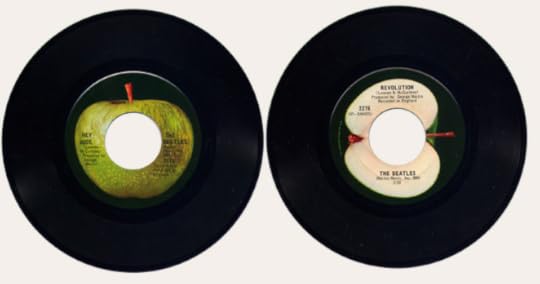 We have striven over the years for the Zen of continuity here at AM, each article leading to the next, but then, it's the anniversary of this or that or someone dies who disconcertingly has nothing to do with the topic of the day – and so our posts are not always as fluid as we’d like. How to associate Kate Bush with the Beatles, then, on the 50th anniversary of "Hey Jude" leads to a bit of a stretch. The obvious Beatles' influence over the young Kate notwithstanding, I could only find this from the BBC in 1984 that truly associates Kate with The Beatles:
We have striven over the years for the Zen of continuity here at AM, each article leading to the next, but then, it's the anniversary of this or that or someone dies who disconcertingly has nothing to do with the topic of the day – and so our posts are not always as fluid as we’d like. How to associate Kate Bush with the Beatles, then, on the 50th anniversary of "Hey Jude" leads to a bit of a stretch. The obvious Beatles' influence over the young Kate notwithstanding, I could only find this from the BBC in 1984 that truly associates Kate with The Beatles:This is Radio One, on new year's eve. And we're playing Kate Bush's favorite songs of all time, and here's one by John Lennon, who was killed in the most appalling way earlier this month, and Kate I'm wondering if you are too young at the age of twenty-two to have fully understood what all of the media fuss was about. So many people were affected so traumatically for so long. Could you really understand what Lennon and the Beatles meant to them?
Yes, absolutely! I think probably people of about sixteen or seventeen, that's the age where it wouldn't really mean that much. But even at my age they really meant so much. I wasn't aware of them first happening and then being the "new thing" but I was aware of them as the most incredible source, and of Lennon being the most fantastic songwriter. He really was one of my favorite artists - not as The Beatles, but as Lennon. And in fact, in compiling this list a couple of months ago, before the news, I'd chosen this track as one of my favorites. So it wasn't meant as a tribute, it was genuinely planned as one of the tracks.
Why this of all his songs?
For me, it's just magic. Um, his voice; the production - it's the most incredible production; uh, little backward voices. They're really things that I love. And just, the song and everything - it's wonderful. And I - I'm really sad because he's left the biggest hole in the business that we've known yet, I think.
Here's John Lennon's "Number Nine Dream." [The record is played. In AM’s opinion, there is no single record that Kate's music reflects the influence of more clearly than this track. All references to Peter Gabriel's influence, or Pink Floyd’s - even as regards production - pale beside a comparative listening between "Number Nine Dream'' and any of a dozen of Kate's recordings.]
Kate, the time has now come for me to spring on you that question: What is your all-time favorite single?
My all-time favorite single. Very, very difficult question, it really is, because just, just trying to compare songs, you know, let alone trying to put one higher than all the others... I think I would say at this point in time John Lennon's "Number Nine Dream'' - for lots of reasons. [We never get those reasons.]
That's it; all we've got. Kate's favorite all time song is "Number Nine Dream." Oh, well, there's that at least, so, on to "Hey Jude."
The Beatles spent two days in July 1968 at Abbey Road Studio Two (EMI) rehearsing "Hey Jude" (AM10) a song written by McCartney for Julian Lennon upon his parent's marital breakup (Paul subsequently changed the name from Jools to Jude). During that period a rough mix was recorded so that George Martin could write an orchestral accompaniment. On July 31st, the group left Abbey Road, which was still equipped with only a four-track recording deck, and went to Trident Studios with it's new eight track capabilities. Although they recorded four takes, they decided the first of the day was best and began overdubbing. "Hey Jude" came together the next day, with the bass and final vocals recorded in the afternoon and a 36-piece orchestra recorded in the evening. Many of the musicians stayed well into the night to add hand claps and background vocals to the coda, though one musician stated that he didn't want to "clap hands and sing on Paul McCartney’s bloody song." Within the week, mono and stereo mixes were completed. Only Brian Wilson had ever utilized more studio time for the creation of a single (over 90 hours of recorded material exists for "Good Vibrations; some 65 hours for the completion of "Hey Jude").
Despite the meticulous nature of the recording, at the 2:59 mark, the phrase, “Fucking hell!’ is audible, following the the word, "Chord." The obscenity was included, though buried deep within the mix.
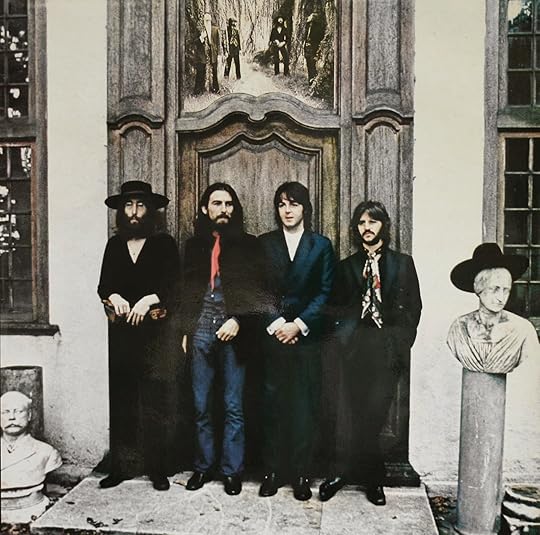 Despite the song's 7:11 running time (which was unprecedented for a single), "Hey Jude" became a smash hit upon its worldwide release — the first on the Beatles' Apple label — at the end of August. It stayed at No. 1 in the U.S. for nine weeks. It didn't have a bad B side either in "Revolution;" the superior up-tempo version helped to make this one of the biggest selling double-A sided singles of all time. "Hey Jude" is the song most often referred to in literature; "Elenore Rigby" holds the No. 2 position.
Despite the song's 7:11 running time (which was unprecedented for a single), "Hey Jude" became a smash hit upon its worldwide release — the first on the Beatles' Apple label — at the end of August. It stayed at No. 1 in the U.S. for nine weeks. It didn't have a bad B side either in "Revolution;" the superior up-tempo version helped to make this one of the biggest selling double-A sided singles of all time. "Hey Jude" is the song most often referred to in literature; "Elenore Rigby" holds the No. 2 position.Written by: Lennon-McCartney (Credited)
Recorded: 29-31 July, 1 August 1968
Producer: George Martin
Engineers: Ken Scott, Barry SheffieldReleased: 30 August 1968 (UK), 26 August 1968 (US)Paul McCartney: vocals, piano, bass
John Lennon: backing vocals, acoustic guitar
George Harrison: backing vocals, electric guitar
Ringo Starr: backing vocals, drums, tambourine
Uncredited: 10 violins, 3 violas, 3 cellos, 2 double basses, 2 flutes, 2 clarinets, 1 bass clarinet, 1 bassoon, 1 contrabassoon, 4 trumpets, 2 horns, 4 trombones, percussion
Published on July 01, 2018 05:24
June 29, 2018
50 Words
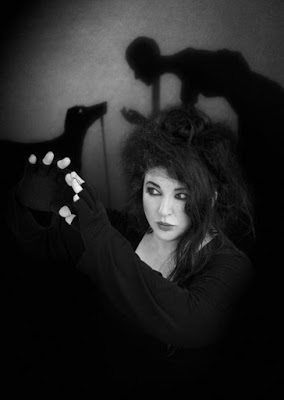 From an opening line that evokes the quiet of snowfall (she's falling, falling, falling as she sensually cries, "Let me hear your 50 words for snow"), 50 Words glistens at a glacial pace. This is no Santa-ridden, cliched Christmas album - obviously, it's not a Christmas album at all - rather something akin to Joni Mitchell's "River" as a part of an extended winter-laden mix. The chill moods of these songs are such that one sees his breath in the winter air and feels the weight of snow-covered trees. It starts with "Snowflake" a stunning hymn that echoes Robert Frost's "Stopping By the Woods on a Snowy Evening." The song's haunting piano coda plays out over nearly ten minutes in which Kate's 13-year-old son, Bertie, offers an eerie "Snowman" choirboy quality as he intones, "I can see horses wading through snowdrifts/ My broken hearts, my fabulous dances/ My fleeting song, fleeting."
From an opening line that evokes the quiet of snowfall (she's falling, falling, falling as she sensually cries, "Let me hear your 50 words for snow"), 50 Words glistens at a glacial pace. This is no Santa-ridden, cliched Christmas album - obviously, it's not a Christmas album at all - rather something akin to Joni Mitchell's "River" as a part of an extended winter-laden mix. The chill moods of these songs are such that one sees his breath in the winter air and feels the weight of snow-covered trees. It starts with "Snowflake" a stunning hymn that echoes Robert Frost's "Stopping By the Woods on a Snowy Evening." The song's haunting piano coda plays out over nearly ten minutes in which Kate's 13-year-old son, Bertie, offers an eerie "Snowman" choirboy quality as he intones, "I can see horses wading through snowdrifts/ My broken hearts, my fabulous dances/ My fleeting song, fleeting." Bush's vocal is a joy which she then goes on to better in the next two exquisite songs that proceed against the backdrop of a musical whiteout. "Lake Tahoe" is over 11 minutes and starts with the dulcet tones of English counter tenor Stephan Roberts. Its piano meanders, carving out blissful melodies over Kate Bush's best vocal on the album, in a song infused with an almost Talk Talk ambiance. Next up, "Misty," is about the love of a human for a snowman, which suggests frivolity, but far from it. Starting like a Keith Jarrett jazz composition, Bush proceeds over nearly 14 minutes to chart the inevitable waning of doomed passion. By any standard, these songs represent an opening of near perfection, and combined with the glorious finale, the sublime "Among Angels," one could not ask for more.
Nevertheless it would be uncharacteristic without its indirect routes and quirky detours. The single "Wild Man" is the nearest to her "traditional" style as she embarks on a Yeti hunt accompanied by Andy Fairweather Low. "Snowed in at Wheeler Street" is a duet with Elton John, and finally the title track sees the ubiquitous Stephen Fry reciting 50 [often made up] words for snow over brilliant drumming by Steve Gadd and exhortations by KB with shouts of "come on man you got 41 to go." Kate has captured the pristine, fragile quality of snow in the same way that Vivaldi on the Four Seasons somehow seized the drama of icy rain in the winter Concerto No. 4.
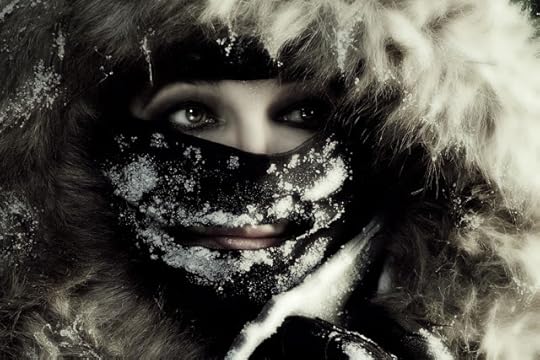
Published on June 29, 2018 04:45
June 27, 2018
The Sensual World
 This is an album that I can't help but appreciate though it remains my least favorite Kate offering, despite the title track and the heartwrenching "This Women's Work." The production values are that of an 80s blockbuster: shamelessly pompous, overdone, saccharine-fueled, hi-fi-ready sound forever stuck in the time it came from. And yet you can tell it's Kate all the way. Highlights include the surprisingly intense art-rock track "Heads We're Dancing" (amazing fretless bass work here by Mick Karn) and the immensely emotional cyber-drama of "Deeper Understanding" (with its strangely beautiful mix of robotic vocals and Trio Bulgarka's choral singing).
This is an album that I can't help but appreciate though it remains my least favorite Kate offering, despite the title track and the heartwrenching "This Women's Work." The production values are that of an 80s blockbuster: shamelessly pompous, overdone, saccharine-fueled, hi-fi-ready sound forever stuck in the time it came from. And yet you can tell it's Kate all the way. Highlights include the surprisingly intense art-rock track "Heads We're Dancing" (amazing fretless bass work here by Mick Karn) and the immensely emotional cyber-drama of "Deeper Understanding" (with its strangely beautiful mix of robotic vocals and Trio Bulgarka's choral singing). Working closely with the Trio, a troupe of Bulgarian folk singers, and traditional Celtic instruments including Uillean pipes, Bush creates a romantic and bewitching album of unmatched sensuality; it's The Kick Inside all grown up. The instrumentation is essentially rooted around Bush's piano and is the lushest and most gorgeous of any of her records up to this point.

Alongside the romantic bent and Bush experiments like "Rocket's Tail," which marries the Bulgarian singers with an epic David Gilmour guitar solo, the album is surprisingly straightforward.
"Love and Anger," "Reaching Out," and "Between a Man and a Woman" are obviously Kate Bush songs and are all melodic and unique, but they are surprisingly easy to digest and take in. Similarly, she sounds comfortable in a more commercial-sounding skin on "Walk Straight Down the Middle" and the dance-inspired "Heads We're Dancing."
Bush here creates an album that marries the originality and uniqueness of her other albums with a straightforward pop/rock sound. It is a romantic and bewitching album, full of beautiful melodies and memorable instrumental lines, and while it's never boring or plain, yet, it remains the least played LP in my collection.
[While I listen to vinyl almost exclusively these days, iTunes and Spotify insist that my list of most listened to KB LPs is (Hounds of Love, The Kick Inside, Lionheart, Never For Ever, The Dreaming. It seems that The Sensual World, The Red Shoes, 50 Words and Aerial failing to make the cut as LPs, with "Moments of Pleasure," "Top of the City," "Snowed in At Wheeler Street," "Pi" and "Mrs. Bartolozzi" my only selections so far in 2018.]
Published on June 27, 2018 05:45
Kate Bush and Molly Bloom
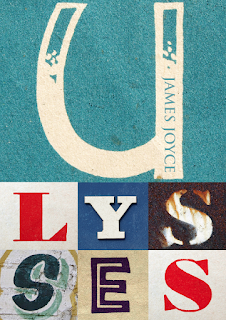 Sensuous indeed! Yes. 1989 saw some of the UK's greatest alternative albums - The Cure's Disintegration (indeed, like Hounds of Love, one of the best LPs ever), Tears For Fears' Seeds of Love, Depeche Mode's Violator, and of course, KB's The Sensual World. The adjectives dark, moody, subfusc, elusive, melancholic, sultry, capricious, even carnal, can't describe the album as aptly as "sensual." Kate's soothingly beckoning vocals have an almost orgasmic feel to them, passing it along to every song on the LP. Musically rich, The Sensual World has an eclectic mix of Balkan, traditional Irish and contemporary rock influences (thanks in part to Kate's mentor, David Gilmour). Add to these, the detailed arrangement of the variegated musical instruments and Kate's enchanting vocals, and you get an LP best enjoyed in loneliness. (Some would call it masturbation.)
Sensuous indeed! Yes. 1989 saw some of the UK's greatest alternative albums - The Cure's Disintegration (indeed, like Hounds of Love, one of the best LPs ever), Tears For Fears' Seeds of Love, Depeche Mode's Violator, and of course, KB's The Sensual World. The adjectives dark, moody, subfusc, elusive, melancholic, sultry, capricious, even carnal, can't describe the album as aptly as "sensual." Kate's soothingly beckoning vocals have an almost orgasmic feel to them, passing it along to every song on the LP. Musically rich, The Sensual World has an eclectic mix of Balkan, traditional Irish and contemporary rock influences (thanks in part to Kate's mentor, David Gilmour). Add to these, the detailed arrangement of the variegated musical instruments and Kate's enchanting vocals, and you get an LP best enjoyed in loneliness. (Some would call it masturbation.)The title track, in all its serenity, talks of the agitated fire that is lust (more on that later). Following it, is the total rock out "Love and Anger", with a fantastic solo by none other than Gilmour himself. "The Fog" is the most complicated and inaccessible tracks and a standout. A trademark spooky Kate Bush number, it kicks off with eerie dialogue giving way to a magnificent strings, enshrouding a delicate violin-solo. "Reaching Out" continues from "The Fog" mild and tender, until it blasts off with its positive and ebullient chorus, charging up a somber atmosphere.
Amidst all the bleakness of The Sensual World, Kate finds herself singing about urban dehumanization (something that Radiohead have become the masters of). "Deeper Understanding" is a microcosm of our growing over-dependence on technology, which starts off with the words, "As the people here grow colder,/ I turn to my computer,/ and spend my evenings with it like a friend," with weird computer-sounds going-on behind, giving the perfect backdrop and a foreshadow to our future, i.e. now. Of course, not all is quiet and subtle in The Sensual World. Together with "Love And Anger," Kate goes all rock and wild with "Between A Man And A Woman", and "Rocket's Tail", which again features Gilmour at his best, accompanied by the vocals of The Trio Bulgarka gone haywire.
Kate's music has always been eerie, elusive, and indeed a sensual world.
"The Sensual World:" I get pissed off (I'm kinda emotional) by the emphasis people put on the final word of James Joyce’s Ulysses, ignoring what preceded it, as if Molly Bloom's orgasmic "Yes" were the equivalent of Yoko Ono's. (John and Yoko's famous first meeting took place at a London gallery showing her artwork. He was impressed by a piece that required him to climb a ladder to the ceiling, where a card displaying a minuscule "yes" resided. In Lennon's defense, he had been doing a lot of acid that week.) That day was an ending, not a beginning. Honestly, isn't the orgasm it, and then immediately inconsequential?
[I just wanted to post that. It has nothing to do with this article, really. Anyways…] Kate Bush was denied the use of Joyce's words (are they Joyce's, btw, or are they so far embedded in the literary psyche that they truly belong to Molly Bloom?) and was subsequently forced to rewrite and rename her tribute "The Sensual World." 22 years on that permission was granted and Kate was able to re-record the song, changing the name to "Flower of the Mountain" (which this writer finds inferior to the original, but whatever). Upon the release of The Director's Cut, Kate stated, "Originally when I wrote the song The Sensual World I had used text from the end of Ulysses but was disappointed not to receive permission. But when I came to work on this current project I thought I would ask for permission again and this time they said yes… [how fitting] I am delighted that I have had the chance to fulfill my original concept."
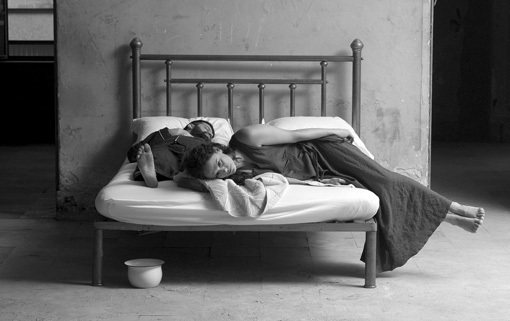
Bush – one of the foremost musical artists of her generation – was struck by the power and potency of Bloom's soliloquy when she heard actor Siobhán McKenna read it. "Because I couldn't get permission for the lyrics I wrote to "The Sensual World," I had Molly Bloom stepping out of the book into the real world and having these impressions of sensuality." When I heard Siobhán McKenna read it I thought: 'My God! This is extraordinary, what a piece of writing!' It’s a very unusual train of thought." Kate's "Flower of the Mountain" was the first time Joyce's work was used in popular song.
Published on June 27, 2018 05:25
A Sea of Honey, A Sea of Sky
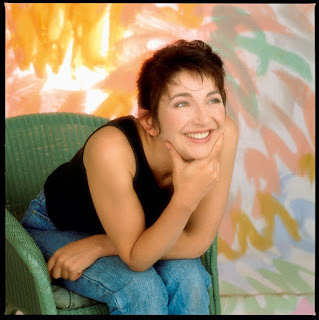 Aerial is an LP with two sub-albums within: A Sea of Honey and A Sky of Honey. Much like Hounds of Love, the second disc is a concept album with the tracks merging, with a common theme of experiencing a perfect day from one dawn to the next. There's laughter, breathing, vibrato and bird imitation, as if Kate has realized that her lesser voice with age is simply as effective as the cherubic squeal of years ago, if only she controls what there is left rather than reach for what isn't. But what characterizes Kate Bush's songwriting here is a mature sense of playfulness. Lead track "King of the Mountain" is an oddly pensive song about Elvis Presley, comparing him to Charles Foster Kane, with Graceland as Xanadu, wondering if perhaps if he is still out there, as if he left it behind because of the artifice of it, gladly rediscovering the joy of anonymity. It's funny shit and yet it's oddly spiritual. Indeed it is as odd as Kate can muster on everyday and mundane topics.
Aerial is an LP with two sub-albums within: A Sea of Honey and A Sky of Honey. Much like Hounds of Love, the second disc is a concept album with the tracks merging, with a common theme of experiencing a perfect day from one dawn to the next. There's laughter, breathing, vibrato and bird imitation, as if Kate has realized that her lesser voice with age is simply as effective as the cherubic squeal of years ago, if only she controls what there is left rather than reach for what isn't. But what characterizes Kate Bush's songwriting here is a mature sense of playfulness. Lead track "King of the Mountain" is an oddly pensive song about Elvis Presley, comparing him to Charles Foster Kane, with Graceland as Xanadu, wondering if perhaps if he is still out there, as if he left it behind because of the artifice of it, gladly rediscovering the joy of anonymity. It's funny shit and yet it's oddly spiritual. Indeed it is as odd as Kate can muster on everyday and mundane topics.
Kate's rendering of π to 116 decimal places is a revelation on π. I'm no mathematician, regarding numbers with distrust; I hadn't knows that numbers could be about love. "How to be Invisible" is a rather witty song about privacy that contains a spell of invisibility: Eye of Braille/ Hem of anorak/ Stem of wallflower/ Hair of doormat. So far Aerial is like Prospero's Books in The Tempest, like Harry Potter newspapers that move. From the wondrous swell of drama in "King of the Mountain" to the poetic heartbreak in "Mrs. Bartolozzi," to the moving piano suite in "A Coral Room" a song about the fragility of time, of how quickly things slip away from us," I dare you not to get misty as Kate sings, "Put your hand over the side of the boat./ What do you feel?"
 Kate uses the first disk to weed out the faint of heart. Casual listeners be damned. Even die-hard Kate fans may not be able to stomach choruses that sing pi to the nth or pay homage to the sexual nature of washing machines. yetif you resist distraction you'll be rewarded with the oddest oddball beauty since Tori Amos wanted to kill that waitress. The second disc, A Sky of Honey is more of a linear statement, the nine songs tracing the afternoon through sunset into the night's dreams. The sky is like a painting and the rain runs the colors of sea and sky into a honeyed haze of sundown smearing shadows across the ground as night falls. The songs are bright and gauzy for the sunlight hours and darker and more urgent after nightfall. It is a simple theme beautifully executed, and "Nocturn" is its apex. "We become panoramic," indeed. "All the dreamers awaken!" As the day becomes the night in a flurry of colors ("An Architect's Dream", "Sunset"), the songs become more personal and more emotional ("Somewhere in Between", "Nocturn"), until we get to the sunrise, and the title track. You wouldn't imagine Kate so carefree, so full of light. I can't even describe it. It's just too beautiful. A perfect closer to KB's new age LP.
Kate uses the first disk to weed out the faint of heart. Casual listeners be damned. Even die-hard Kate fans may not be able to stomach choruses that sing pi to the nth or pay homage to the sexual nature of washing machines. yetif you resist distraction you'll be rewarded with the oddest oddball beauty since Tori Amos wanted to kill that waitress. The second disc, A Sky of Honey is more of a linear statement, the nine songs tracing the afternoon through sunset into the night's dreams. The sky is like a painting and the rain runs the colors of sea and sky into a honeyed haze of sundown smearing shadows across the ground as night falls. The songs are bright and gauzy for the sunlight hours and darker and more urgent after nightfall. It is a simple theme beautifully executed, and "Nocturn" is its apex. "We become panoramic," indeed. "All the dreamers awaken!" As the day becomes the night in a flurry of colors ("An Architect's Dream", "Sunset"), the songs become more personal and more emotional ("Somewhere in Between", "Nocturn"), until we get to the sunrise, and the title track. You wouldn't imagine Kate so carefree, so full of light. I can't even describe it. It's just too beautiful. A perfect closer to KB's new age LP.
Published on June 27, 2018 05:23
Waking the Witch - Kate Bush at Her Most Terrifying
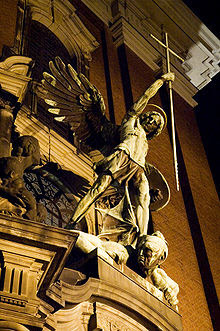 In "Waking the Witch," a frenzy of activity transcends. In the 17th century, women were routinely tried for "witchcraft." During the Salem Witch Trials, 19 women were hung, and one man; Giles Corey, was pressed to death under a door with increasingly more weight added. His dying words: "More weight." The test to determine if a woman was a witch was to throw her into the water. Witches float while the innocent sink and drown. Here, Kate is on trial and sinking. There is pious Latin chanting ("Spiritus sanctus, in nomine domini") and the voice of the Inquisitor: "What is it, child?"/ "Bless me, father, bless me, father, for I have sinned. UHN! Help me, listen to me, listen to me, tell them baby! UHN! Help me baby, talk to them!"/ Inquisitor: "I question your innocence!"
In "Waking the Witch," a frenzy of activity transcends. In the 17th century, women were routinely tried for "witchcraft." During the Salem Witch Trials, 19 women were hung, and one man; Giles Corey, was pressed to death under a door with increasingly more weight added. His dying words: "More weight." The test to determine if a woman was a witch was to throw her into the water. Witches float while the innocent sink and drown. Here, Kate is on trial and sinking. There is pious Latin chanting ("Spiritus sanctus, in nomine domini") and the voice of the Inquisitor: "What is it, child?"/ "Bless me, father, bless me, father, for I have sinned. UHN! Help me, listen to me, listen to me, tell them baby! UHN! Help me baby, talk to them!"/ Inquisitor: "I question your innocence!""There's a stone around my leg."
Inquisitor: "What say you, good people?"
"Guilty! Guilty! Guilty!"
"Waking the witch," with its jarring, unnerving stutter, a frightening electronics glitch, is a truly terrifying exploration of sound and theme. Kate is persecuted and condemned to drown; there are no more choices. Fear, exhaustion, hallucination, crisis, revisiting the cause ("Under Ice"), revisiting the past, the human need to find oneself; the survival instinct trying to kick in, trying to surface through dreamwork: "Wake up! Pay Attention! Keep focused. We can make the Night! Attend to the Light! Listen to me!" But shock waves, weakness, disorientation plunge our heroine into Kafkaesque nightmare: her right to survive is on trial: will she sink or float, doomed either way.
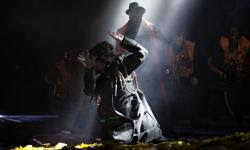 Kate Performing "Waking the Witch" in 2014The Exorcism and Prayer to St. Michael the Archangel fits here: "He, in that sign, the rebel powers/ Did, with their dragon prince, expel;/ And hurled them from the heavens' high towers,/ Down, like a thunderbolt, to hell."
Kate Performing "Waking the Witch" in 2014The Exorcism and Prayer to St. Michael the Archangel fits here: "He, in that sign, the rebel powers/ Did, with their dragon prince, expel;/ And hurled them from the heavens' high towers,/ Down, like a thunderbolt, to hell."Indeed, Kate at her most terrifying! "I think even though a lot of people say that the side is about someone drowning, it's much more about someone who's not drowning, and how they're there for the night in the water, being visited by their past, present and future to keep them awake, to keep them going through until the morning, until there, uh, there's hope." "Waking the Witch" can be seen as aa battle between Thanatos (death instinct) and Eros (life instinct). The helicopter that comes at the end of this particular hallucination holds a man who simply tells her absurdly to get out of the water. If only she could; is it that easy?* Subconsciously she hears the the helicopter and Eros kicks in, reminding her to focus on getting out alive!
*An aside: "I couldn't get a helicopter anywhere and in the end I asked permission to use the helicopter from The Wall from The Floyd. It was the best helicopter I'd heard for years [laughs]"
Published on June 27, 2018 04:02
June 26, 2018
The Ninth Wave - Девятый вал, Dyevyatiy val
Published on June 26, 2018 07:30
Aerial
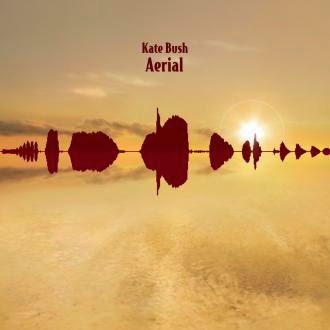 Aerial (AM7 - Recorded July, August, 2005), Kate Bush's first album in 12 years, is best listened to during the night alone; it is difficult, brooding at times, filled with sticky melancholy; the question is, was it worth the wait? Obviously, the wait was for Bertie (her son), but had Kate whittled her way out of mad genius, and all that motherhood left behind was genius of the garden variety?
Aerial (AM7 - Recorded July, August, 2005), Kate Bush's first album in 12 years, is best listened to during the night alone; it is difficult, brooding at times, filled with sticky melancholy; the question is, was it worth the wait? Obviously, the wait was for Bertie (her son), but had Kate whittled her way out of mad genius, and all that motherhood left behind was genius of the garden variety? On a night when no one was home, listening to and studying the lyrics for "Mrs. Bartolozzi" (Slooshy sloshy slooshy sloshy/
Get that dirty shirty clean/ Slooshy sloshy slooshy sloshy/ Make those cuffs and collars gleam), I stumbled upon something about the cover. As we'd all done, I assumed the photograph was Mono Lake or some odd outcropping in the north of England, but it so obviously wasn't. These were sound waves! I should have known better. Had 12 years left me no insight into an artist I had idolized? I scurried to the computer and isolated the image, removing the reflection in the lake:

Yet, loading it into Bitmaps and Waves, I cringed to hear this (close Wikplayer player below, then hit play):
Why? That wasn't what I'd expected. Some crazy code? Some type of cryptic Easter Egg? Noise? I played it over and over again. What was I missing? I took the clothes out of the dryer. I was thinking about backmasking and it suddenly dawned on me that the album cover graphic was a manipulation of only the volume of the soundwave. Listen again below to the original soundwave. It's followed immediately by the same mp3, speeded up nearly ten times. Mystery solved. Kate: MAD GENIUS! As Kurt Vonnegut would say "Poo tee weet."
Published on June 26, 2018 04:55
π - Kate Bush - Infinite Ramblings

And so I obsess about art and what art is and why rock isn't, and inevitably when obsessing, I turn to Kate Bush. Joni Mitchell can be unsettling for me at times. As an adoptive Californian, Joni accentuates my ennui, longing for days in the hazy sun on a billboard scaffold eating lunch with my father (Pinks or Fatburger, Ben Frank's). Rickie Lee only compounds my reflection, Tom Waits makes me want a drink (I don't drink), But Kate grounds me like the Beatles. I can ponder her concepts and controversies, her idiosyncrasies, without duress.
One of my favorite tracks, "Pi," from the 2005 LP Aerial, is the unrequited love song of a mathematician, audacious in subject matter and treatment. The chorus is Pi sung to many, many decimal places, but is it really Pi? (I've heard rumors.) Upon analysis, all is well for the first 53 decimal places, but then Kate sings "threeeeee oneeeee" when she should sing "zeeeeeeerooo" instead. She recovers for the next 24 digits, then it's hell in a handbag when she misses the next 22 completely. Why?
Sweet and gentle and sensitive manWith an obsessive nature and deep fascination for numbersAnd a complete infatuation with the calculation of PiOh he love, he love, he loveHe does love his numbersAnd they run, they run, they run himIn a great big circleIn a circle of infinity
Here's the chorus as it should be sung:
(Real Pi): 3.
14159265358979323846264338327950288419716939937510582 0
Instead, Kate sings:
(Kate Bush Pi): 3.
14159265358979323846264338327950288419716939937510582 31
Why?
 Obsessive voices: For God's sakes, let it go. Enjoy her voice, her inflections, and the love of life. Perfection lasts but fleetingly, God forever, and us momentarily. Let it go, man. ("I Put this moment here.") Who says Kate is singing the digits directly after the 3? It is almost certain these digits exist somewhere in Pi, based on its infinence. ("I Put this moment here.") Yet, since Pi is a positive value less than 4, it is not in itself "infinite," rather its decimal expansion is infinite. Further, the decimal expansion never repeats, except for isolated sequences which later diverge. This, coupled with the fact that its value cannot be expressed using whole numbers and roots (ie: it's "transcendental"), makes it certain that any given finite sequence of digits will appear somewhere in Pi's expansion. ("I Put this moment...") Perhaps, she is chanting the numbers of Pi as one would chant the name of God. Parts are unspeakable and not meant for human ears. Or, perhaps, she was going by the Biblical approximation, which was surprisingly accurate. I strongly doubt the omittance and alleged tripping over the numbers was anything but deliberate. ("...Over here!") I would love to hear her sing an extended version that lasts an hour; could you imagine? The song is about a man obsessed with Pi, the song is NOT Pi itself. Skipping numbers could represent the man following his journey and obsession passing through time and then picking it back up only to find that he is still going at it. But Pi is endless. Therefore ANY numeric representation of Pi is merely an approximation of the value. Some approximations are closer than others. Is this merely a less accurate approximation? As an artistic expression about a man obsessed with Pi, the song is not inaccurate. Furthermore, as an approximation of Pi, it's pretty darn close. Let it go, man.
Obsessive voices: For God's sakes, let it go. Enjoy her voice, her inflections, and the love of life. Perfection lasts but fleetingly, God forever, and us momentarily. Let it go, man. ("I Put this moment here.") Who says Kate is singing the digits directly after the 3? It is almost certain these digits exist somewhere in Pi, based on its infinence. ("I Put this moment here.") Yet, since Pi is a positive value less than 4, it is not in itself "infinite," rather its decimal expansion is infinite. Further, the decimal expansion never repeats, except for isolated sequences which later diverge. This, coupled with the fact that its value cannot be expressed using whole numbers and roots (ie: it's "transcendental"), makes it certain that any given finite sequence of digits will appear somewhere in Pi's expansion. ("I Put this moment...") Perhaps, she is chanting the numbers of Pi as one would chant the name of God. Parts are unspeakable and not meant for human ears. Or, perhaps, she was going by the Biblical approximation, which was surprisingly accurate. I strongly doubt the omittance and alleged tripping over the numbers was anything but deliberate. ("...Over here!") I would love to hear her sing an extended version that lasts an hour; could you imagine? The song is about a man obsessed with Pi, the song is NOT Pi itself. Skipping numbers could represent the man following his journey and obsession passing through time and then picking it back up only to find that he is still going at it. But Pi is endless. Therefore ANY numeric representation of Pi is merely an approximation of the value. Some approximations are closer than others. Is this merely a less accurate approximation? As an artistic expression about a man obsessed with Pi, the song is not inaccurate. Furthermore, as an approximation of Pi, it's pretty darn close. Let it go, man.
"Mrs. Bartolozzi"
All the casual listener will hear is "washing machine, sloshy sloshy." Similarly at a museum, one has to fight his way through the throngs of know-it-alls and their "negative space" or the I-could-do-that's – not much different. One is hard pressed, therefore, in a song like "Mrs. Bartolozzi" to express the eminent brilliance, to get those who will not, to buy in. You won't impress them with Goddard or Nico Muhly or Gilbert & George either, but they've got a print of Starry Night over the commode and go on and on about the deep underpinnings of Shawshank Redemption, reveling in its hokey, unrelenting voiceover and cartoonish 1D characters. Such a simple song about a shirt drifting in the wind or bluejeans tumbling in the washer couldn't possibly make a lasting impression.
Pish. Here are painful reminders, exemplified in a lost husband's clothes, making Mrs. Bartolozzi painfully aware of the vacant spot that her husband's comforting presence once filled. Those reminders are fresh in her mind, so fresh that out the corner of her eye, her husband is waving to her, yet it's just a shirt, flying and waving its arms about in the wind. Maybe she dreams at night of a past life in which her husband and she are together still, and for the dream's duration nothing is amiss. She awakens on his her side of the bed. Simply poignant. There is no her side.
Mrs. Bartolozzi washes and hangs his clothes to dry though he's not coming back to claim them. Time telescopes when one is encased in grief, days blur into days, moments prolong into agonizing hours, and the only way to endure the pain is to suspend time, to simply exist moment to moment and wait for the pain to ease.
The imagery in these words is nothing short of mesmerizing:
I remember it was that WednesdayOh when it rained and it rainedThey traipsed mud all over the houseIt took hours and hours to scrub it outAll over the hall carpetI took my mop and bucketAnd I cleaned and I cleanedThe kitchen floorUntil it sparkled
All she could do was stand to the side and watch them (EMTs, Medics, Police) tromp mud through the house (the ambiguity doesn't matter). Numb in her grief after they leave, she focuses on those tangibles in front of her. She scrubs the mud out of the hall carpet, she gathers the dirty laundry for the washing machine and maybe, for a moment, she stares into the washer, watching it rinse the mud out of a pair of jeans or the blood from a shirt. She's grateful that in this one case, something can be put to rights. The washing machine makes everything clean again.
I watched them go 'round and 'roundMy blouse wrapping itself in your trousersOh the waves are going outMy skirt floating up around my waistAs I wade out into the surfOh and the waves are coming in
The sensual allusion to the ocean; the reminiscence is surreal. So much here in this painting; this poem as art. How could you just walk by?
Slooshy sloshy slooshy sloshyGet that dirty shirty cleanSlooshy sloshy slooshy sloshyMake those cuffs and collars gleamEverything clean and shiny
Funny, there are those who think these lyrics are stupid. Wow.
Washing machine
Washing machine
Published on June 26, 2018 04:55




